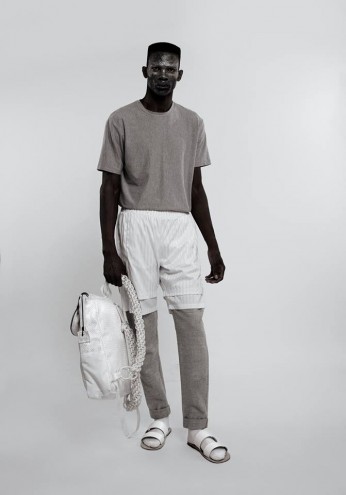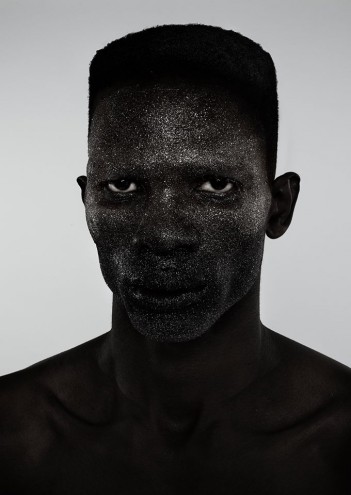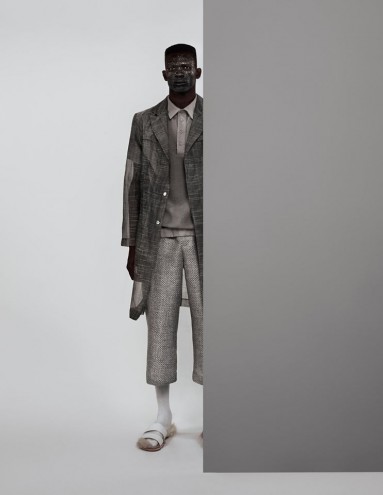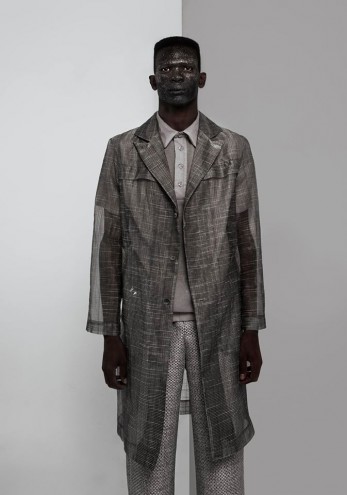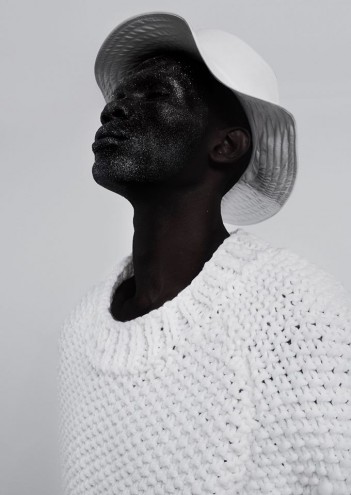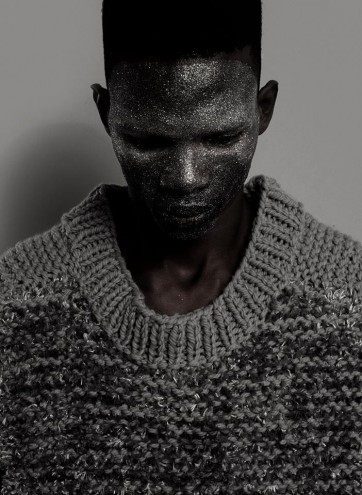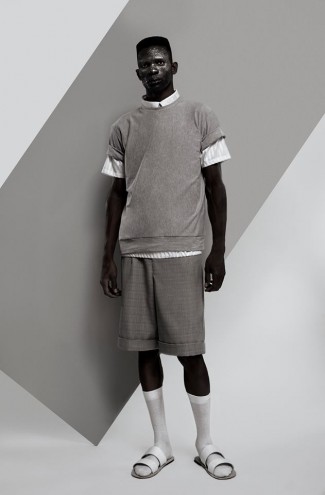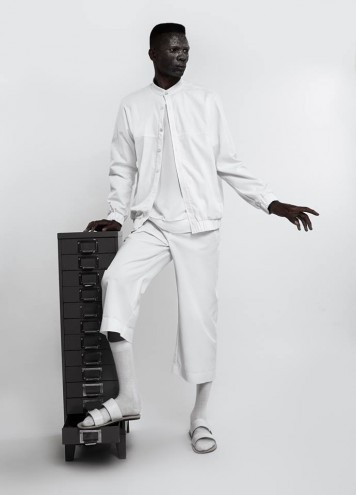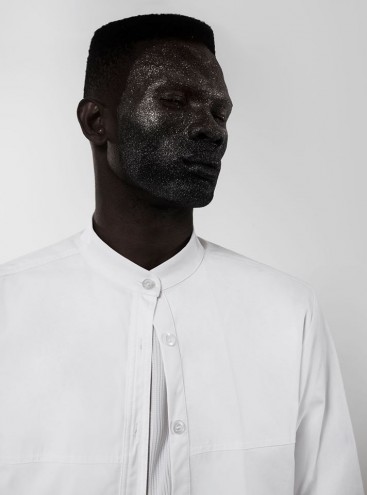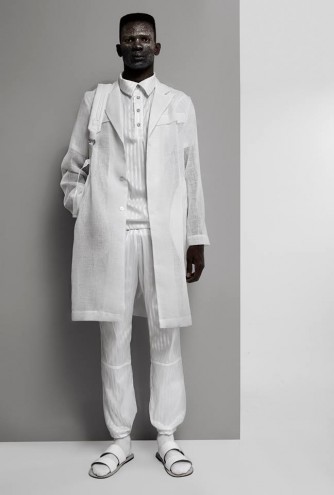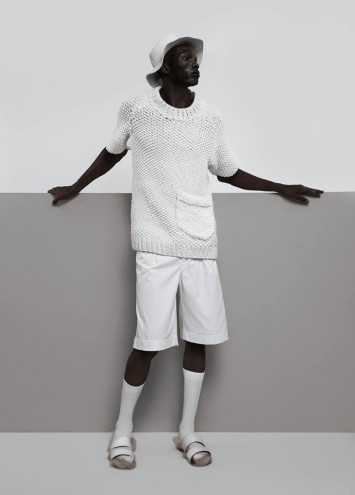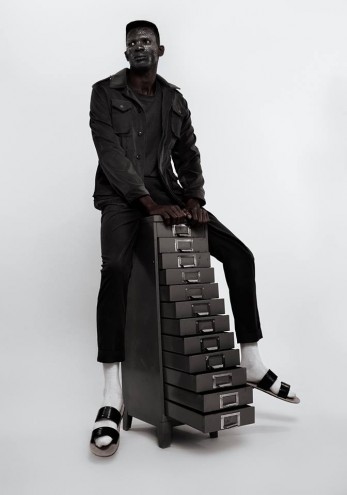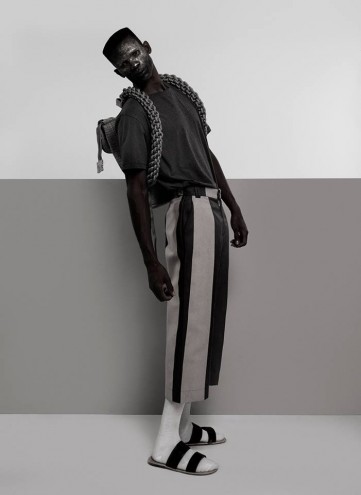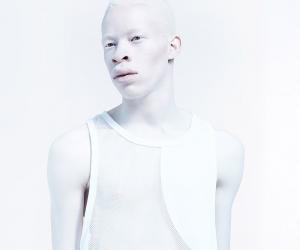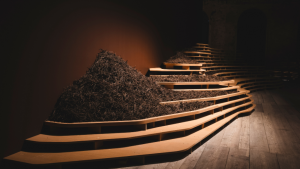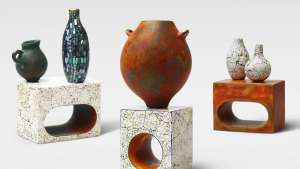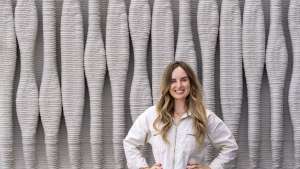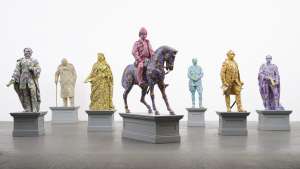Lukhanyo Mdingi stays true to the minimalist aesthetic he showcased as an Emerging Creative at this year’s Design Indaba Expo with his latest ready-to-wear men’s collection.
The Cape Town-based fashion designer’s Macramé collection is named after its inspiration – the handcraft whereby string is knotted into patterns to make decorative objects. “I wanted to use fabric types and fabrications that embodied the same qualities of this ancient method,” explains Mdingi.
Mdingi used knitwear and carefully chosen upholstery fabric to create a strong sense of texture, which offsets his minimalist design approach.
I took the collection a step further by creating backpacks that had bag straps made from corded rope, also making use of the macramé technique, says Mdingi.
We asked Mdingi what steered him towards fashion design and what draws him to an avant-garde approach.
When did you discover that you wanted a career in fashion design?
I've always known; the feeling was pretty instant. When I was younger I discovered that there are other careers in fashion besides fashion design itself. Back then I didn't want to restrict myself to just the design aspect so I researched all the other available options.
Today though, I feel I have made a total 360, by ending where I had first envisioned myself – as a fashion designer.
What is your main inspiration as a designer?
So many things! I base my inspirations on a minimal aesthetic, exploring different ways to balance the two – inspiration plus principles of minimalism.
Why fashion design?
To be honest I can't see myself in any other field than fashion design. It makes me happy, it challenges me, it fulfils me and it allows me to make a positive contribution to society by using my design talent.
Why do you think you are drawn to an avant-garde aesthetic?
In 2014 I completed a post-graduate degree in fashion design at the Cape Peninsula University of Technology. I had to identify a problem and establish a theoretical discourse around it, paired with a practical counterpart.
I felt that avant-garde menswear was something that had not yet been challenged enough in South Africa. So, I wanted to use my post-graduate year as an opportunity to explore and identify avant-garde aesthetics and craft techniques in South Africa.
How does craft and innovation play a role in your fashion?
It’s very important to me! With each new collection I feel that I must show progression and growth. Innovation and craft are components that I thrive on tackling – to me they speak volumes of the fashion designer and his/her capabilities.
What are some of the unconventional materials you chosen to work with them?
Granite was my first collection. For this womenswear range I used wiring, upholstery fabrics and Mylar plastic sheets to create blazers and hats.
Are there recurring themes in your work?
Yes, definitely. I'm so young and I'm still finding my feet but I do feel that from my Basics Collection until now, there have been distinct similarities. It all comes down to my minimalist aesthetic I stay true to.
What makes your collections different from other South African fashion designers?
Judging by the new talent of emerging fashion designers in South Africa, each and every one is distinct and recognisable. I feel that my choice of unconventional materials and minimalist aesthetic makes my work different from the next.
Lukhanyo Mdingi is one of the artists being featured by Design Indaba in its WeTransfer wallpaper partnership. View his wallpaper live on WeTransfer.

